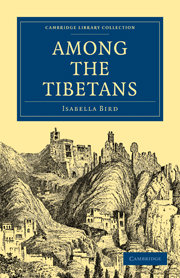CHAPTER II - SHERGOL AND LEH
Published online by Cambridge University Press: 29 August 2010
Summary
The chaos of rocks and sand, walled in by vermilion and orange mountains, on which the village of Shergol stands, offered no facilities for camping; but somehow the men managed to pitch my tent on a steep slope, where I had to place my trestle bed astride an irrigation channel, down which the water bubbled noisily, on its way to keep alive some miserable patches of barley. At Shergol and elsewhere fodder is so scarce that the grain is not cut, but pulled up by the roots.
The intensely human interest of the journey began at that point. Not greater is the contrast between the grassy slopes and deodar clothed mountains of Kashmir and the flaming aridity of Lesser Tibet, than between the tall, dark, handsome natives of the one, with their statuesque and shrinking women, and the ugly, short, squat, yellow-skinned, flat-nosed, oblique-eyed, uncouth-looking people of the other.
The Kashmiris are false, cringing, and suspicious; the Tibetans truthful, independent, and friendly, one of the pleasantest of peoples. I ‘took’ to them at once at Shergol, and terribly faulty though their morals are in some respects, I found no reason to change my good opinion of them in the succeeding four months.
The headman or go-pa came to see me, introduced me to the objects of interest, which are a gonpo, or monastery, built into the rock, with a brightly coloured front, and three chod-tens, or relic-holders, painted blue, red, and yellow, and daubed with coarse arabesques and representations of deities, one having a striking resemblance to Mr. Gladstone.
- Type
- Chapter
- Information
- Among the Tibetans , pp. 40 - 71Publisher: Cambridge University PressPrint publication year: 2010First published in: 1894

